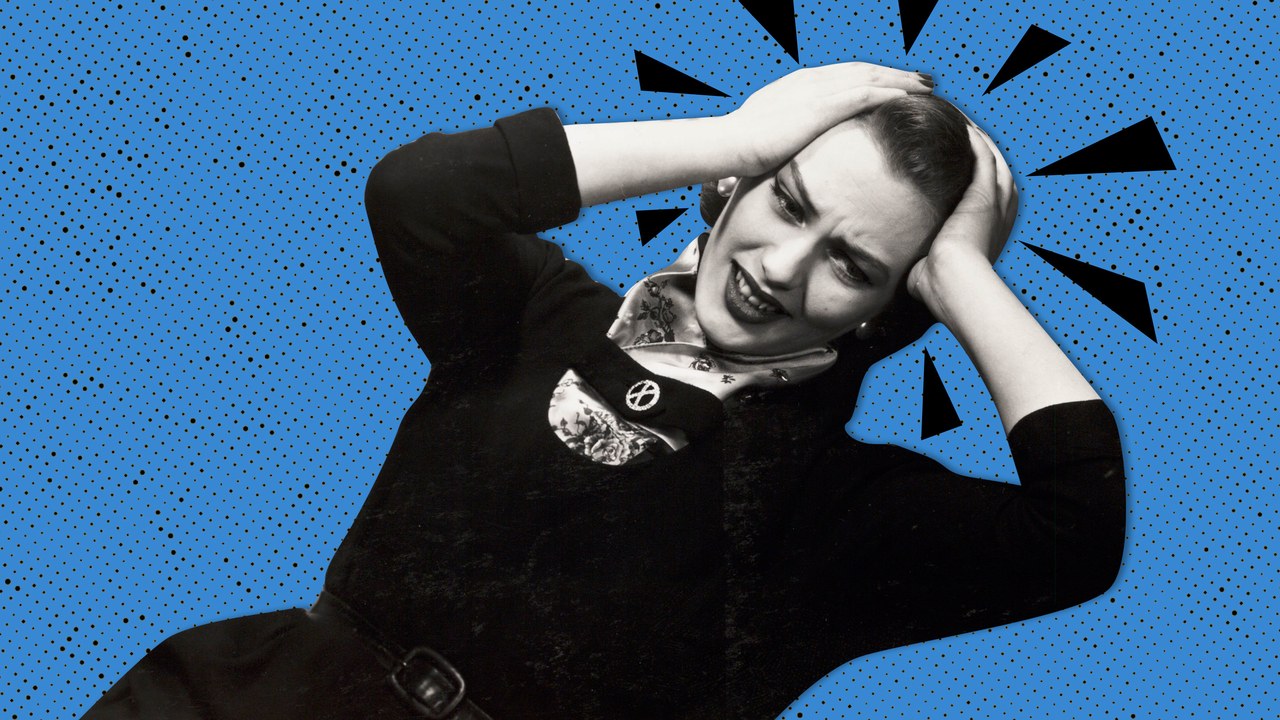I Have a Brain Aneurysm—I Call Her Annie

You never really imagine seeing your name and the words “death,” “coma,” and “paralysis” on the same page until you do—until you get a letter from your neurosurgeon that says all of those things alongside the words “brain aneurysm.” Then, it’s like freezing, cold water running over your naked body. Even though the stated likelihood of such things happening is astronomically low. Because for anyone with a genuine interest in being alive, any likelihood of death is already way too high.
I rang in the new year with weird headaches: inside my head, it felt like little tumbleweeds made of needles were rolling around my brain every time I coughed, or laughed. I’d literally have to stop and freeze mid-giggle to allow them to pass. I pushed my neurologist for an MRI because your girl was not about to go down like this. That’s when we found a pretty large aneurysm chillin’ in my brain, a few inches behind my right eye.
My first thought was that I had to give my aneurysm a name, a personality, some flare to make her exciting. I call her Annie.
You may think this is an odd reaction to finding out you are a 23-year-old with a brain aneurysm, but if Annie the Aneurysm is living in my brain rent-free, I’m at least going to have a bit of fun with her. I figure Annie is probably a white lady with a lot of problematic but well-meaning thoughts who would probably ask to speak with your manager. She definitely doesn’t like alcohol or drugs (especially cocaine), and she’s a stickler about high blood pressure and cholesterol. Annie certainly wasn’t invited to my brain (is Annie ever really invited anywhere?) but she clearly doesn’t mind crashing a party. I can’t really blame her—between social justice musings, Bad Bunny verses, and enchilada cravings, my brain must be a grand ol’ time.
My neurosurgeon explained that a lot of people have their own Annie—in the most comforting of voices, he made it clear that unruptured aneurysms are common, very much treatable, and not something over which I should lose much sleep. Yeah, okay sure. But if Annie decides to throw a rager and pop, it could be deadly. My neurosurgeon explained that I have an estimated 3 percent likelihood of rupture in the next five years—30 percent in the next 20 years. Annie’s gotta go.
When I took Annie for a photoshoot (aka an angiogram), to learn exactly when we could schedule this farewell party, my neurologist learned Annie was bigger than we thought. She’s even sprouted a mini aneurysm of her own. Though the initial plan was to send a teeny tiny catheter into the artery near my hip, route it through my blood vessels, into my brain, and straight into Annie’s crib, I’m now debating between a version of this procedure and open-head surgery. Because I’m only 23, and because I want to get rid of Annie once and for all, a part of me is leaning toward the open-head surgery in hopes of limiting the farewell parties to just one.
Either surgery won’t happen for a bout a month—in the meantime, Annie is still here, cozied up in my head. Since she arrived, I’ve been getting rather existential. Even after my doctor explained the plan of action, seeing it all in print in the letter he sent me was still a little jarring. I re-read one statistic my neurosurgeon included: approximately one in a thousand people are likely to die or to experience permanent disability from aneurysm treatments.
Instead of freaking out, I decided to hold and respect the possibility that it could be me, that I could be that one. And, if this were the case, my body’s inability to fend for itself would not have been the result of poor medical treatment. Having lost a sister to cancerous brain tumors when I was very young, I have never really seen doctors as saviors, nor seen death as a choice. We are all headed in the same direction—whether Annie pops and gives me a mean ‘lil stroke or whether I meet some other finale, it’s an end that we will all eventually meet.





